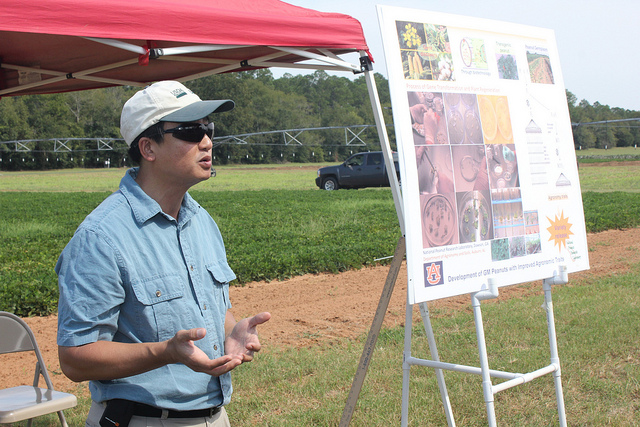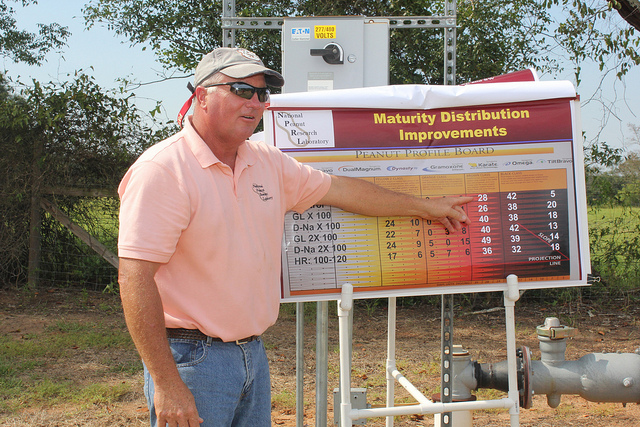Georgia Peanut Tour attendees were able to see first hand the ongoing research programs at the USDA/ARS National Peanut Research Lab’s Bolton Farm in Terrell County, Ga. NPRL conducts a variety of projects to assist the peanut industry focusing on environmental research, systems research, flavor/quality research, peanut grading research, storage research and mycotoxin research with particular emphasis on the aflatoxins. The Laboratory conducts research toward improving quality, cleaning, storing and marketing of peanuts. Research is oriented toward solving the major problems confronting the peanut producer, handler, manufacturer, and the consumer. NPRL is also intricately involved in studies toward developing new and improved production marketing systems to reduce unit cost, enhance domestic and foreign use of peanuts and provide a safe, high quality product to the consumer. The tour visited the Bolton Farm of NPRL and here’s a few highlights from the tour. . .
 Phat Dang, Research Chemist
Phat Dang, Research Chemist
The process of regeneration and transformation allows us to transfer genes from different species that can confer either disease resistance or drought resistance that we couldn’t do through traditional breeding. We’ve identified that leaf spot is one of our initial targets that allows the combination of traditional breeding. Selecting varieties that already have higher levels of resistance but adding another gene to that will provide an even higher level of resistance . We are hoping that farmers can reduce their spray schedule and hopefully eliminate that spray schedule.
 Ron Sorenson, Research Agronomist
Ron Sorenson, Research Agronomist
The drip irrigation is very easy. Farmers can take normal drip irrigation they would use for vegetables and we bury it 2 to 3 inches in the ground and put in a main line. Bury so that it is alternate row middles and it costs about $300 per acre for the cost of tubing and main line. A farmer can irrigate and leave the drip tubing in the ground for about three years and use strip tillage and plant cotton, corn and peanut. When a farmer grows peanuts on the third year then they would remove the tubing prior to digging. So far, Sorenson has seen a 7 time yield increase for corn compared to dryland, a 3 times yield increase for cotton and 1 and a quarter times yield in increase for peanuts. However, he says a lot of that tends to deal with the way peanuts grow. He says they tend to hunker down with dry weather and sit and wait for the rain and then put on the yield when it rains.
 Marshall Lamb – NPRL Research Leader
Marshall Lamb – NPRL Research Leader
We’ve been looking at ways to improve the maturity distribution and the flavor of peanuts by reducing the amount of immature peanuts that come on the peanut plant as we are getting ready to harvest the most mature. The peanut being an indeterminate crop will basically bloom, flower and produce fruit until it dies. Sometimes that’s a good thing and sometimes that causes us problems because the immature peanuts can reduce grade and actually take energy away from those that are trying to become more mature and they also give us a lot of problems when we are drying and processing peanuts by mainly giving us an off flavor. We have found that with two chemical treatments we can break the flower cycle for about 20 days and that’s what we are after. With very little or minimal damage to the foliage. That did result when we did our maturity distributions in a lot more mature kernels on the peanuts compared to non-treated. If we have less immature peanuts and can take the energy and partition it to the more mature peanuts on the vine then hopefully that will improve yield and grade for the grower.
